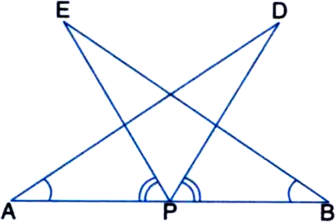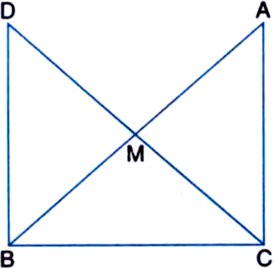 Short Answer Type
Short Answer Type

(i) ∆ABD ≅ ∆BAC
(ii) BD = AC
(iii) ∠ABD = ∠BAC.


Line I is the bisector of an angle ∠A and B is any point on I. BP and BQ are perpendiculars from B to the arms of ∠A (see figure). Show that:
(i) ∆APB ≅ ∆AQB
(ii) BP = BQ or B is equidistant from the arms of ∠A.
Given: Line l is the bisector of an angle A and B is any point on l. BP and BQ are perpendiculars from B to the arms of ∠A.
To Prove: (i) ∆APB ≅ ∆AQB
(ii) BP = BQ
Or
B is equidistant from the arms of ∠A.
Proof: (i) In ∆APB and ∆AQB,
∠BAP = ∠BAQ
| ∵ l is the bisector of ∠A
AB = AB | Common
∠BPA = ∠BQA | Each = 90°
| ∵ BP and BQ are perpendiculars from B to the arms of ∠A
∴ ∆APB ≅ ∆AQB | AAS Rule
(ii) ∵ ∆APB ≅ ∆AQB
| Proved in (i) above
∴ BP = BQ. | C.P.C.T.
(i) ∆DAP ≅ ∆EBP
(ii) AD = BE.

 Long Answer Type
Long Answer Type
(i) ∆AMC ≅ ∆BMD
(ii) ∠DBC is a right angle
(iii) ∆DBC ≅ ∆ACB![]()
 Short Answer Type
Short Answer Type
